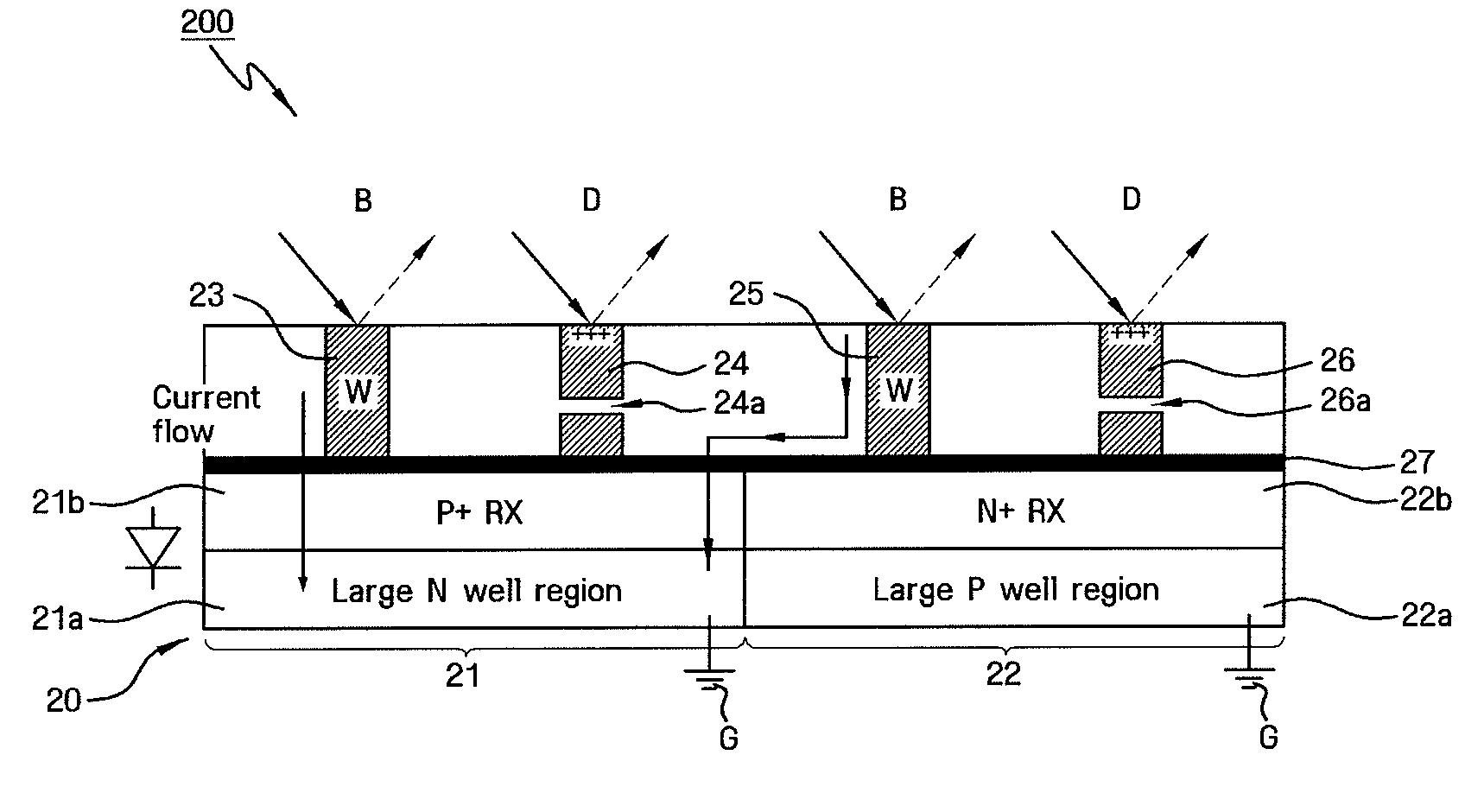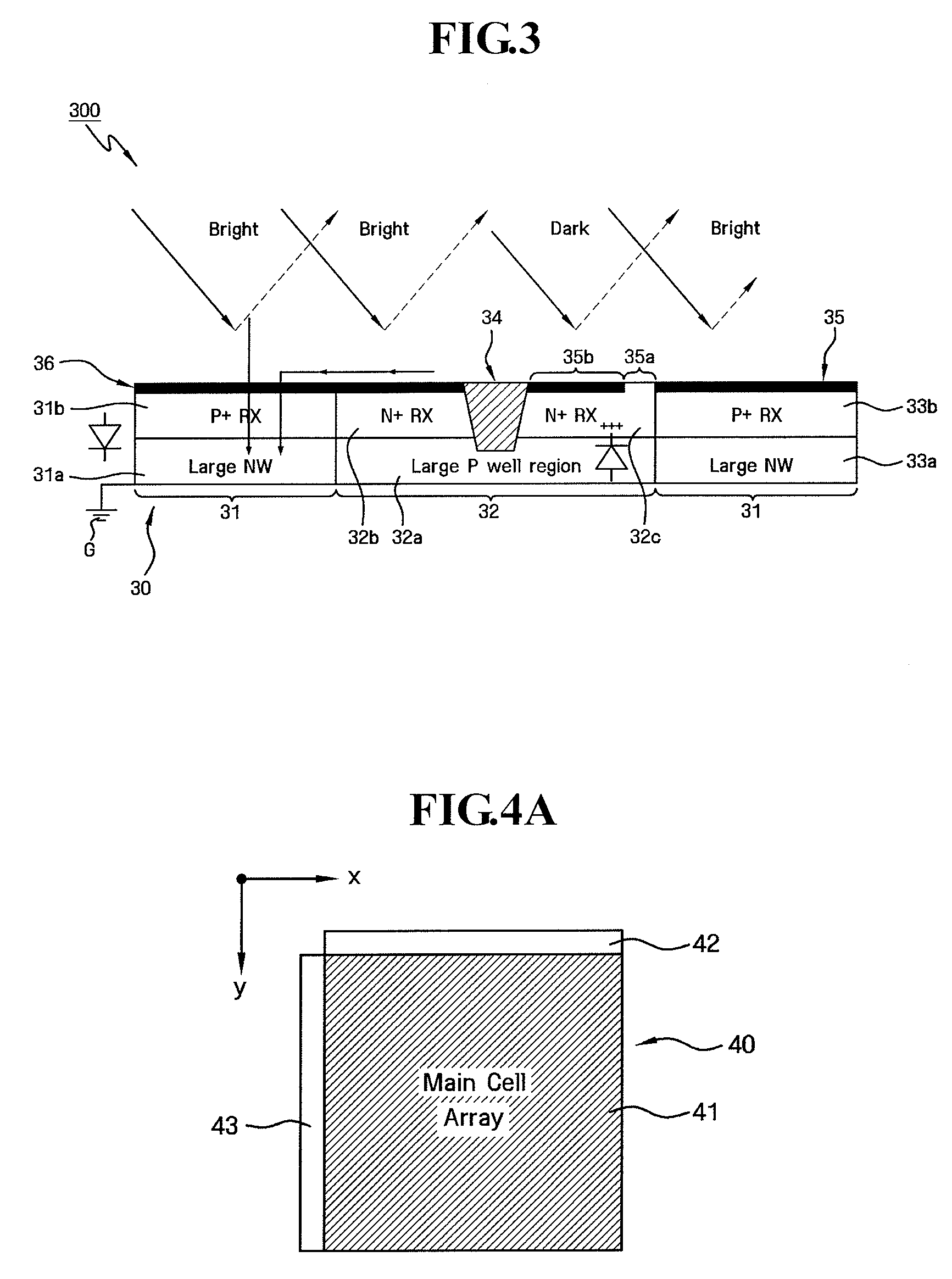Semiconductor Integrated Test Structures For Electron Beam Inspection of Semiconductor Wafers
a technology of semiconductor wafers and integrated test structures, which is applied in the direction of individual semiconductor device testing, semiconductor/solid-state device testing/measurement, instruments, etc., can solve the problems of increasing inspection time, analysis and cost, and reducing the efficacy of voltage contrast inspection, so as to facilitate the detection of voltage contrast defects
- Summary
- Abstract
- Description
- Claims
- Application Information
AI Technical Summary
Benefits of technology
Problems solved by technology
Method used
Image
Examples
Embodiment Construction
[0031]Exemplary embodiments of semiconductor test structures for use with e-beam contrast inspection to detect electrical defects on semiconductor wafers will now be described more fully with reference to the schematic illustrations ofFIGS. 2-7, where it is to be understood that the thickness and dimensions of various structures, layers and regions of semiconductor devices illustrated in the Figures are not to scale but rather exaggerated for clarity. It is to be further understood that when a layer is described as being “on” or “over” another layer or substrate, such layer may be directly on the other layer or substrate, or intervening layers may also be present. Moreover, similar reference numerals used throughout the drawings denote elements having the same or similar functions.
[0032]For illustrative purposes, exemplary embodiments of the invention will be described herein in the context of CMOS integrated circuit fabrication techniques, wherein test structures are designed to al...
PUM
 Login to View More
Login to View More Abstract
Description
Claims
Application Information
 Login to View More
Login to View More - R&D
- Intellectual Property
- Life Sciences
- Materials
- Tech Scout
- Unparalleled Data Quality
- Higher Quality Content
- 60% Fewer Hallucinations
Browse by: Latest US Patents, China's latest patents, Technical Efficacy Thesaurus, Application Domain, Technology Topic, Popular Technical Reports.
© 2025 PatSnap. All rights reserved.Legal|Privacy policy|Modern Slavery Act Transparency Statement|Sitemap|About US| Contact US: help@patsnap.com



